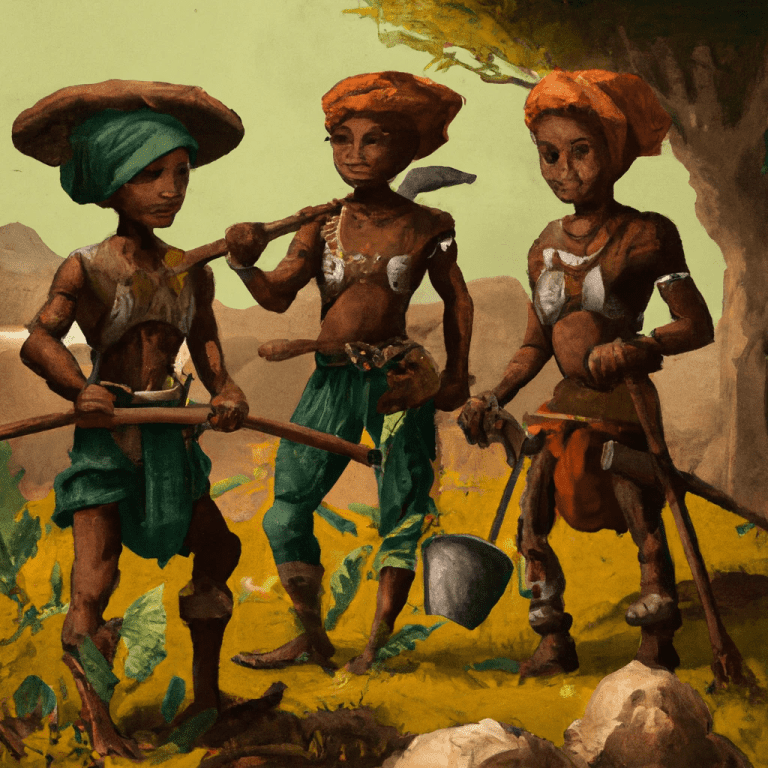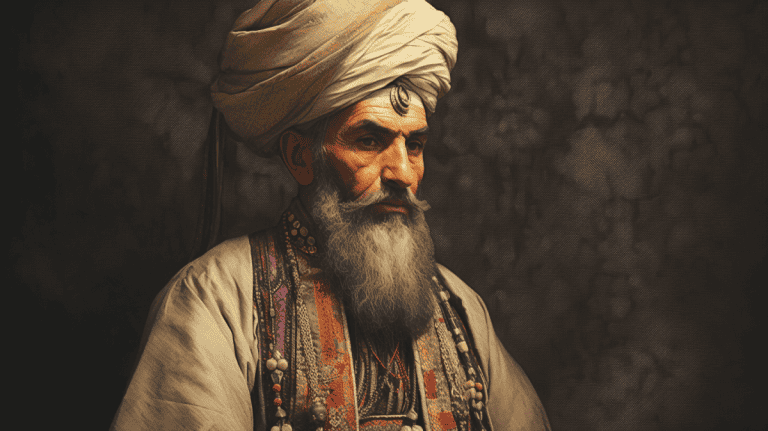The Almoravids, a powerful Berber dynasty from the 11th to 12th centuries, transformed North Africa and Spain with their unique blend of military prowess, religious zeal, and cultural patronage, leaving a lasting legacy.
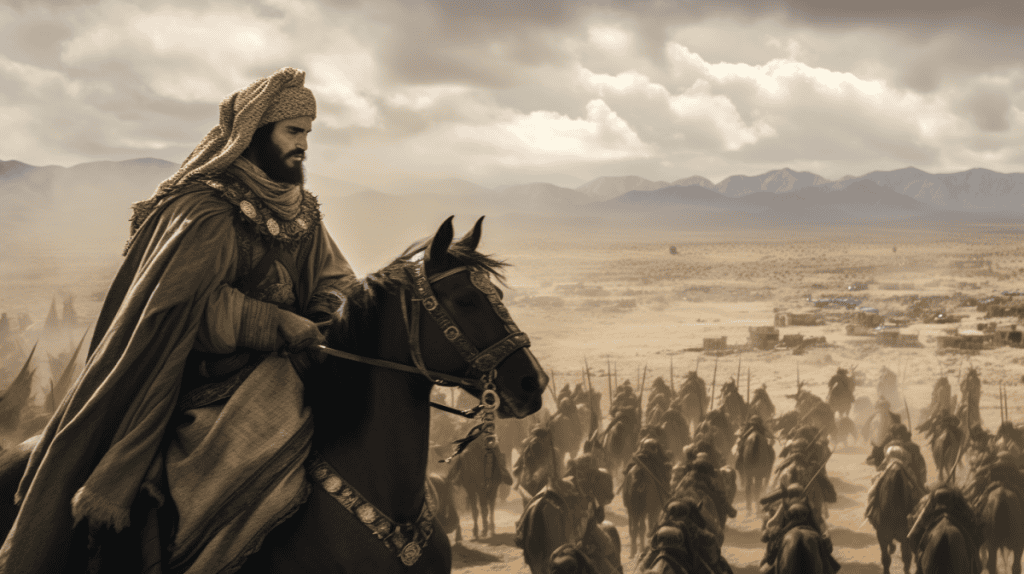
Origins of the Almoravids
“Almoravid,” derived from the Arabic term “al-Murabit” and adapted into Spanish as “almorávide,” showcases an example of betacism, the transition of ‘b’ to ‘v’ in Spanish language evolution.
In the Arabic language, “al-Murabit” translates to “one who is ready for battle at a fortress,” though its literal meaning is “one who is tying.” This term connects to the concept of ribat, a kind of frontier monastery-fortress in North Africa, originating from the Arabic root r-b-t, which means to tie or unite, or to encamp.
The Almoravid name is historically linked to the “Dar al-Murabitin,” a school dedicated to Malikite law established in Sus al-Aksa, now known as modern Morocco, by the scholar Waggag ibn Zallu. Ibn Zallu’s student, Abdallah ibn Yasin, was tasked with spreading Malikite Islam among the Sanhaja Berbers of the Adrar, in today’s Mauritania. Consequently, the Almoravids were named after the followers of the Dar al-Murabitin, signifying “the house of those united in the cause of God.”
During the early medieval period, the Maghreb’s Berber populations were primarily divided into three significant groups: the Zenata in the north, the Masmuda centred in central Morocco, and the Sanhaja spread across the western Sahara and the eastern Maghreb’s hills. The eastern Sanhaja comprised groups like the Kutama Berbers, the key to the Fatimid ascent in the early 10th century, and the Zirid dynasty, rulers of Ifriqiya under Fatimid suzerainty post-972. In contrast, the western Sanhaja consisted of various tribes, including the Gazzula and Lamta in the Draa valley and Anti-Atlas foothills, and the Massufa, Banu Warith, Lamtuna, and Gudala in the western Sahara and coastal Mauritania.

Islam reached the western Sanhaja around the 9th century. United in the 10th century, they embarked on campaigns against sub-Saharan African “Sudanese” pagan groups. King Tinbarutan ibn Usfayshar of the Sanhaja Lamtuna built or seized the Aoudaghost fortress, pivotal in trans-Saharan trade. However, after the Sanhaja union’s fall, Aoudaghost fell to the Ghana Empire, and Zenata Maghrawa of Sijilmasa took over the trade routes, pushing Sanhaja tribes out of the Sous and Draa valleys. In an attempt to reunite these tribes around 1035, the Lamtuna leader Abu Abdallah Muhammad ibn Tifat (Tarsina) faced a brief reign.
The Almoravid empire, at its peak, extended from Aoudaghost to Zaragoza in Al-Andalus. Yahya ibn Ibrahim, a Gudala chieftain and Tarsina’s brother-in-law undertook a pilgrimage to Mecca around 1040. On his return, stopping in Ifriqiya’s Kairouan, he met Abu Imran al-Fasi, a Fez native and Sunni Maliki jurist. This period saw Ifriqiya in upheaval, with Zirid ruler al-Mu’izz ibn Badis considering a break from Fatimid Shi’ite rule. In discussions with al-Fasi, Yahya expressed concern over the Sanhaja’s religious education and adherence to Islamic law in the south. Following al-Fasi’s advice, Yahya sought a Maliki teacher at Waggag ibn Zelu’s ribat in southern Morocco, where Abdallah ibn Yasin was assigned to him.
Abdallah ibn Yasin, likely a Gazzula convert to Islam, was known for his strict Quranic adherence and orthodox practice, though some chroniclers questioned his depth of learning. His initial interactions with the Guddala were fraught, leading to his expulsion following Yahya ibn Ibrahim’s death in the 1040s. However, Ibn Yasin found a receptive audience with the neighbouring Lamtuna. Sensing Ibn Yasin’s potential to unify, Lamtuna leader Yahya ibn Umar al-Lamtuni invited him to preach to his tribe. Under Ibn Yasin’s guidance, the Lamtuna leadership embraced a doctrine that combined Islamicization with conquest, viewing anything outside Islamic law as opposition. This ideology resonated with the Lamtuna’s ambition to rebuild the Sanhaja Union and reclaim their territories. By the early 1050s, the Lamtuna, led by Yahya ibn Umar and Abdallah ibn Yasin now known as the Almoravids, embarked on a mission to rally their neighbours to their cause.
Almoravid Architecture
The era of the Almoravids, followed by the Almohad period, is regarded as a crucial phase in the development of Moroccan and Moorish architecture, laying the foundation for many of its characteristic styles and motifs that were later refined. Manuel Casamar Perez notes that the Almoravids moved away from the Andalusi trend of heavy, elaborate decoration, prevalent since the Caliphate of Córdoba, towards a more balanced approach between ornamentation and proportions.
Before the rise of the Almoravids, Kairouan and Córdoba were the key artistic hubs in the Islamic west, both former capitals influencing regional architecture. The Almoravids established Marrakesh as a new imperial capital, becoming a significant hub for architectural innovation. They assimilated architectural styles from al-Andalus, such as the intricate arches from the Great Mosque in Córdoba and the Aljaferia palace in Zaragoza, and introduced new decorative techniques from the east, including muqarnas carvings.
Following their victory at the Battle of Sagrajas, the Almoravids brought artisans of various faiths from Iberia to North Africa to work on architectural projects. Significant examples of Almoravid architecture include the Great Mosque in Algiers (circa 1097), the Great Mosque of Tlemcen (1136), and the expansion of al-Qarawiyyin in Fez (1135). The Almoravid Qubba in Marrakesh, noted for its ornate interior dome with stucco carvings and muqarnas cupolas, is a surviving testament to their architectural style. The Qarawiyyin Mosque features early complex muqarnas vaulting in the Western Islamic world, with architectural historians remarking on their intricacy at such an early stage.
Aside from religious buildings, the Almoravids constructed numerous fortifications, although many were later altered by subsequent dynasties. Marrakesh’s initial fort, the Ksar el-Hajjar (“Fortress of Stone”), was built by founder Abu Bakr ibn Umar, primarily to secure the treasury. Around 1126, Ali Ibn Yusuf erected rammed earth walls around the city in response to the Almohad threat. The Marrakech Walls, extensively restored and expanded over the centuries, still, define Marrakesh’s medina. The city’s original gates, like Bab Doukkala, also date from this period, exemplifying the bent entrance design common in medieval Maghreb and Al-Andalus architecture. Evidence of other Almoravid forts, showcasing similarities with Hammadid fortifications and a need for rapid construction, is found at archaeological sites like Tasghîmût and Amargu.

In residential architecture, no Almoravid palaces or houses have survived, known only through historical texts and archaeological findings. Ali Ibn Yusuf’s large palace, constructed beside the Ksar el-Hajjar (now the site of the Kutubiyya Mosque), was later replaced by the Almohad Kasbah. Excavations in the 20th century uncovered remnants of this palace, revealing Morocco’s earliest known riad garden layout. Further excavations near Chichaoua unearthed a domestic complex from the Almoravid period, featuring houses, hammams, a water system, and possibly a mosque. Artefacts found here, now in Rabat’s Archaeological Museum, include stucco fragments with Kufic and cursive inscriptions and vegetal motifs. Similarly, excavations under the 12th-century Almoravid expansion of the Qarawiyyin Mosque in Fez revealed former houses with painted red ochre decorations, featuring interlacing geometric motifs and Kufic inscriptions.
Conquests of the Almoravids
Early Expansion
In the 1050s, the Almoravid movement saw a leadership trio emerge: Abdallah Ibn Yasin, Yahya Ibn Umar, and his brother Abu Bakr Ibn Umar, with the Lamtuna tribe becoming the dominant force over the Guddala. This period marked the start of the Almoravids’ expansion and conquest of Saharan tribes. Their initial strategic targets were the cities of Sijilmasa in the north and Awdaghust in the south, key to controlling trans-Saharan trade. Sijilmasa, under Maghrawa of the Zenata Berber confederation, and Awdaghust, governed by the Soninke, were both seized around 1054-1055. The victory at Sijilmasa, where leader Mas’ud Ibn Wannudin and other Maghrawa leaders were defeated, was a significant milestone. The conquering army, reportedly 30,000 strong, left a Lamtuna garrison before capturing Awdaghust the same year. Despite Awdaghust’s Muslim population, the city faced harsh treatment from the Almoravids, who opposed its allegiance to the pagan king of Ghana.
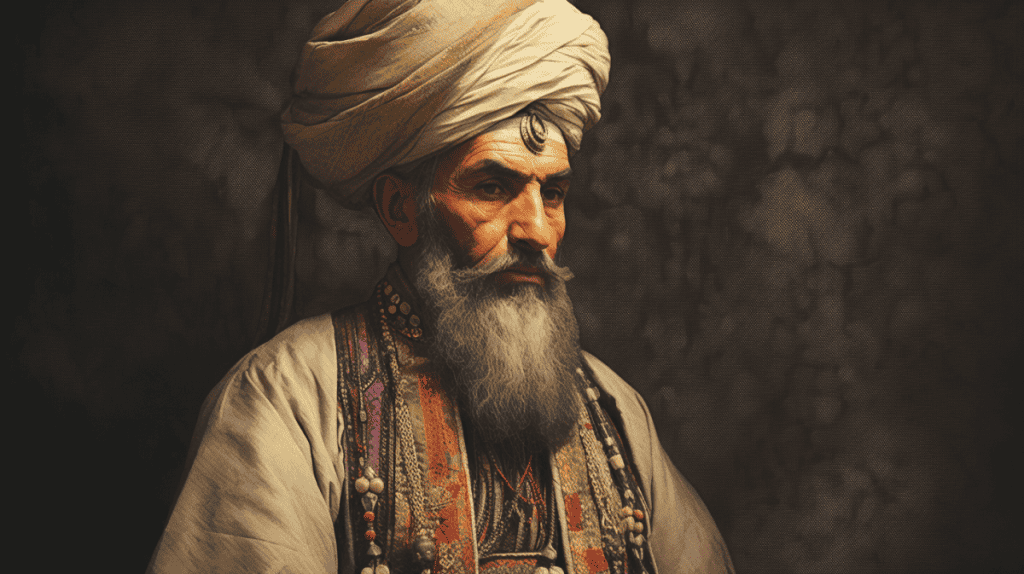
Soon after the Almoravid army departed from Sijilmasa, the city rebelled, and the Maghrawa overran the Lamtuna garrison. Ibn Yasin organized a second expedition to reclaim the city, but the Guddala withdrew to their desert homelands along the Atlantic. Historian Amira Bennison notes that some Almoravids, including the Guddala, were reluctant to engage in conflict with the northern Zanata tribes, creating internal tensions. Ibn Yasin headed north while Yahya Ibn Umar stayed in the southern Adrar, the Lamtuna heartland, at a fortress named Azuggi, built by his brother Yannu ibn Umar al-Hajj. This stronghold is considered by some scholars as the Almoravids’ initial capital. Yahya ibn Umar later perished in battle against the Guddala between 1055 and 1057.
In the north, Ibn Yasin directed Abu Bakr to lead the Almoravid army, which swiftly recaptured Sijilmasa. By 1056, they had secured Taroudant and the Sous Valley, imposing Maliki Islamic law. The campaign’s end saw them establish a base in Sijilmasa, with Abu Bakr’s cousin Yusuf ibn Tashfin commanding the garrison.
In 1058, the Almoravids breached the High Atlas, seizing Aghmat and designating it their capital. There, they encountered the Barghawata, a Berber confederation adhering to an Islamic doctrine from Salih ibn Tarif, resisting fiercely. Abdullah ibn Yasin fell in battle against them at Kurīfalalt or Kurifala in 1058-1059. By 1060, the Barghawata were subdued by Abu Bakr ibn Umar, converting to orthodox Islam. Soon after, Abu Bakr expanded to Meknes.
Around 1068, Abu Bakr’s marriage to Zaynab an-Nafzawiyyah, a noble and affluent Berber woman, significantly influenced the dynasty. Zaynab, daughter of a wealthy Kairouan merchant and widow of Aghmat’s ruler Laqut ibn Yusuf ibn Ali al-Maghrawi, became a key figure following the Almoravid conquest.
Founding of Marrakech
During this period, Abu Bakr ibn Umar established Marrakesh as the new capital, with historical accounts varying on the date of its founding. While Ibn Abi Zar and Ibn Khaldun suggest 1062, Muhammad al-Idrisi points to 1078 (470 AH). However, 1070, as noted by Ibn Idhari, is the date most commonly accepted by contemporary historians, although some references still mention 1062. Not long after Marrakesh’s establishment, Abu Bakr had to address a rebellion in the Sahara by the Guddala and their allies, jeopardizing crucial desert trade routes, around either 1060 or 1071. During this time, his wife Zaynab, reluctant to move south, was divorced and, reportedly at Abu Bakr’s behest, married Yusuf Ibn Tashfin. Before departing, Abu Bakr named Ibn Tashfin as his deputy over the northern Almoravid territories.
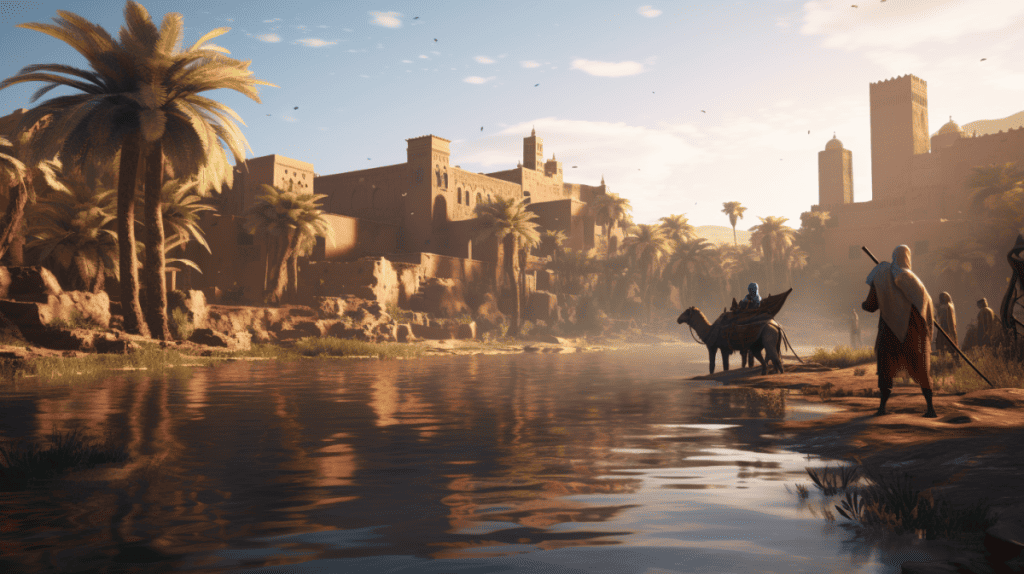
A year later, having quelled the southern uprising, Abu Bakr journeyed back north, aiming to reclaim his leadership in Marrakesh and over the Almoravid forces in North Africa. However, Ibn Tashfin, now firmly established in his leadership role and purportedly influenced by Zaynab’s counsel, resisted relinquishing control. Near Aghmat, Abu Bakr, recognizing his limited options and unwilling to engage in conflict for Marrakesh, acknowledged Ibn Tashfin’s leadership. The two leaders met between Aghmat and Marrakesh to formalize this decision. Abu Bakr then returned south to continue leading the Almoravids in the Sahara.
Subsequently, the Almoravid Empire was effectively split: Ibn Tashfin led in the north, while Abu Bakr held sway in the south. Abu Bakr remained the nominal supreme leader of the Almoravids until he died in 1087, with no recorded hostility between him and Ibn Tashfin, who even minted coins in Abu Bakr’s name until his passing. Following Abu Bakr’s departure, Ibn Tashfin played a pivotal role in developing the Almoravid state in the Maghreb over the next two decades. Abu Bakr’s son, Ibrahim, who led in Sijilmasa between 1071 and 1076, challenged Ibn Tashfin’s authority around 1076. He marched towards Aghmat, intending to reclaim his father’s position in the Maghreb. However, the potential conflict was averted by another Almoravid commander, Mazdali ibn Tilankan, who convinced Ibrahim to join his father in the south, thus preventing a civil war.
Expanding further into the Maghreb
In the interim, Ibn Tashfin had successfully brought the vast area encompassing present-day Morocco, Western Sahara, and Mauritania under the Almoravid domain. He dedicated several years to methodically seizing forts and settlements around Fez and northern Morocco. Once he had most of the region under his control, Fez was finally conquered. However, historical records present conflicting chronologies of these conquests, with some situating the major victories in the 1060s and others in the 1070s. Some contemporary authors pinpoint the definitive capture of Fez to 1069 (461 AH), while historian Ronald Messier dates it more precisely to 18 March 1070 (462 AH). Other scholars place this event around 1074 or 1075.
In 1079, Ibn Tashfin dispatched a 20,000-strong army from Marrakesh towards modern-day Tlemcen to confront the Banu Ya’la, a Zenata tribe in control there. Commanded by Mazdali Ibn Tilankan, this force triumphed near the Moulaya River valley, defeating and executing Mali Ibn Ya’la, Tlemcen’s ruler’s son. However, Ibn Tilankan delayed advancing towards Tlemcen, as Oujda, held by the Bani Iznasan, was too formidable. Ibn Tashfin returned in 1081, capturing Oujda and then Tlemcen, overpowering the Maghrawa and their leader, al-Abbas Ibn Bakhti al-Maghrawi. By 1082, Algiers had fallen to him. He then used Tlemcen, comprising the old settlement Agadir and the newly founded Takrart, as his eastern stronghold.

The Almoravids encountered repeated conflicts with the Hammadids eastward but did not persistently attempt to conquer central Maghrib, focusing instead on other areas. A peace treaty with the Hammadids was eventually signed in 1104, with Algiers becoming their furthest eastern point.
Before aiding the Taifas emirs in Al-Andalus, Ibn Tashfin prioritized capturing Ceuta. Controlled by Zenata forces under Diya al-Dawla Yahya, Ceuta was the last significant African city near the Strait of Gibraltar resisting his rule. To gain assistance against Christian forces, he negotiated with al-Mu’tamid ibn Abbad of Seville, who agreed to send a fleet for a naval blockade, while Ibn Tashfin’s son Tamim led the land siege. Ceuta capitulated around June–July 1083 or August 1084.
Under Ibn Tashfin, the western Maghreb was systematically divided into administrative provinces, marking a departure from its largely tribal past. A burgeoning central government was established in Marrakesh, with key regions governed by trusted allies and relatives. The growing Almoravid state, while partly financed by Islamic taxes and gold from Ghana, relied substantially on the gains of conquests. The Almoravid army predominantly comprised Sanhaja recruits, but Ibn Tashfin also formed a personal guard (ḥashm) including 5000 black (‘abid) and 500 white soldiers (uluj, likely European).
Almoravids & the Ghana Empire
Once Abu Bakr Ibn Umar left Yusuf Ibn Tashfin in charge of the northern regions and returned to the south, he reportedly made Azuggi his main base. This town became the capital for the southern division of the Almoravid empire under his and subsequent rulers’ reign. Despite the Saharan trade routes’ significance for the Almoravids, the history of the empire’s southern part remains less documented in Arabic historical sources and is often overlooked in studies of the Maghreb and al-Andalus. This gap in textual sources has led to a reliance on archaeology for understanding the southern wing of the empire, sparking lively debates among scholars about the Almoravid influence in the Sahel.

Arab tradition holds that the Almoravids, under Abu Bakr’s leadership, conquered the Ghana Empire, founded by the Soninke, around 1076–77. This narrative, for instance, is supported by historian Ibn Khaldun, who referred to writings from Shaykh Uthman, the faqih of Ghana, in 1394. According to this account, the Almoravids weakened Ghana, exacted tribute, and eventually led to its subjugation and absorption by the neighbouring Sosso people.
However, scholars like Conrad and Fisher have criticized this view, suggesting that the idea of an Almoravid military conquest is more folklore than fact, stemming from misinterpreted or overly simplistic readings of Arabic sources. Professor Timothy Insoll’s archaeological work in ancient Ghana reveals little evidence of the rapid changes or destruction that would accompany such military conquests.
Dierke Lange, while acknowledging the military incursion theory, posits that Almoravid political agitation played a significant role in Ghana’s demise. He argues that their religious influence was gradual, emerging through strategic marriages within the nobility, rather than through military force. Lange points to various factors, including internal dynastic struggles influenced by the Almoravids and Islamic pressures, as contributing to Ghana’s decline.
Contesting this interpretation, scholars like Sheryl L. Burkhalter emphasize the Almoravids’ role in controlling and circulating West African gold, arguing that such achievements likely required substantial political influence.
The prevailing view is that conflict with the Almoravids contributed to Ghana’s decline as a commercial and military power by 1100, leading to its disintegration into tribal entities and chieftaincies. Some of these groups assimilated into the Almoravids, while others laid the foundations of the Mali Empire.
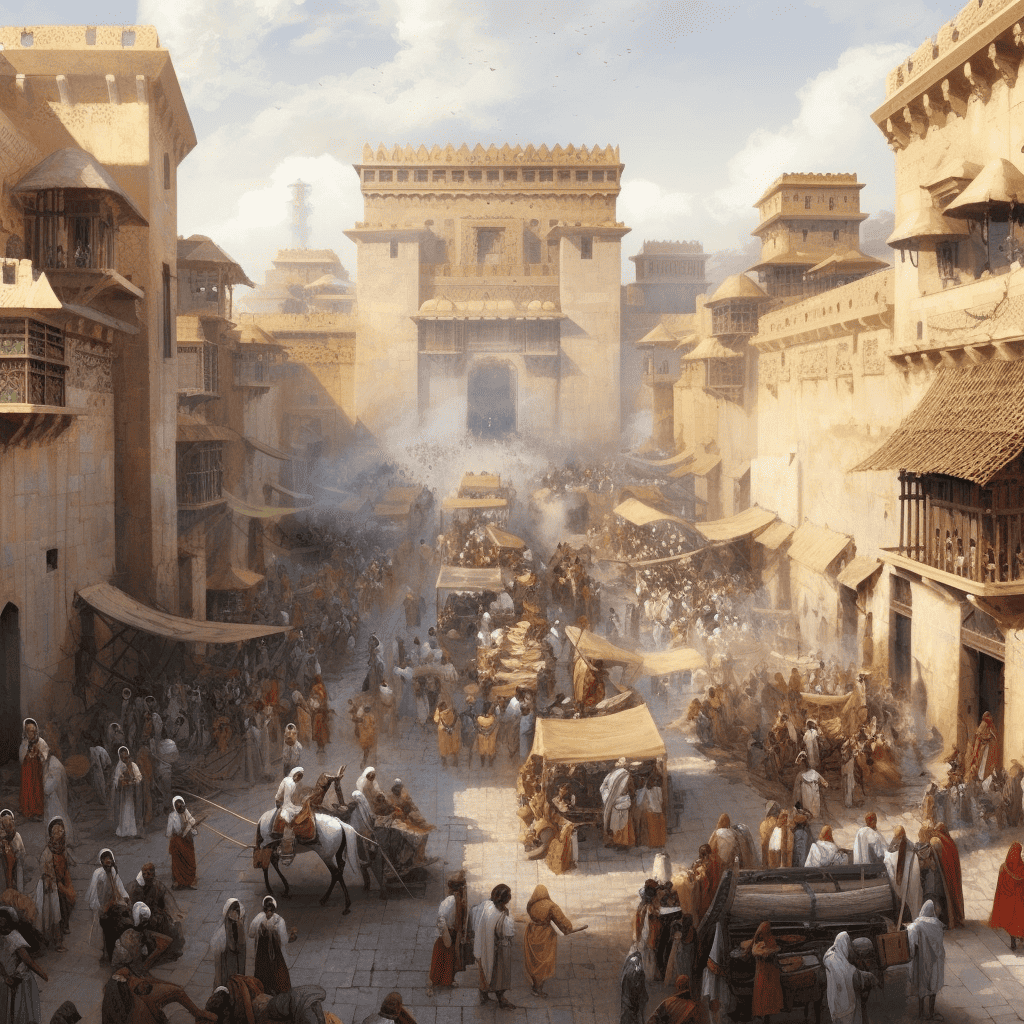
Arab geographer Ibn Shihab al-Zuhri noted that the Almoravids ended Ibadi Islam in Tadmekka in 1084, and Abu Bakr reached a significant gold-rich region in the deep south. Abu Bakr’s death in Tagant in November 1087, purportedly from a battle wound, marked the end of his leadership in the historic region of the Sudan.
After Abu Bakr’s death, the Berber tribal confederation in the Sahara split between descendants of Abu Bakr and his brother Yahya, presumably losing control over Ghana. Burkhalter suggests that Abu Bakr’s son Yahya led the 1076 Almoravid expedition that conquered Ghana, arguing that the Almoravids continued to rule the Sahara until the late 12th century, surviving both the loss of Ghana and defeats in the Maghreb by the Almohads.
Iberian Peninsula
In 1086, Yusuf ibn Tashfin was summoned by the taifa Muslim princes in the Iberian Peninsula to protect their lands from Alfonso VI, the King of León and Castile. That year, he crossed the Strait of Gibraltar to Algeciras and triumphed over Castile in the Battle of Sagrajas. However, issues back in Africa demanded his attention, leading him to personally address them.
Ibn Tashfin returned to Iberia in 1090 with the intent to annex the taifa kingdoms. He received widespread support from Iberians, who were dissatisfied with the heavy taxes imposed by their extravagant rulers. Religious leaders, including notable figures like al-Ghazali in Persia and al-Turtushi in Egypt (an Iberian native from Tortosa), condemned the taifa rulers for their religious apathy. These clerics issued a fatwa recognizing Yusuf’s moral integrity and his religious legitimacy in overthrowing the heterodox rulers. By 1094, Yusuf had taken control of most major taifas, except Zaragoza. The Almoravids triumphed at the Battle of Consuegra, where El Cid’s son, Diego Rodríguez, was killed. Alfonso, alongside some Leónese forces, retreated into Consuegra’s castle, which withstood an eight-day siege before the Almoravids retreated.
After corresponding amicably with the caliph in Baghdad, whom he recognized as Amir al-Mu’minin (“Commander of the Faithful”), Yusuf ibn Tashfin took the title of Amir al Muslimin (“Commander of the Muslims”) in 1097. He passed away in 1106, believed to be aged 100. At the time of his death, the Almoravid realm was at its zenith, encompassing Northwest Africa up to Algiers and most of Iberia south of the Tagus and eastward to the Ebro’s mouth, including the Balearic Islands.
An Almoravid gold dinar from Seville, dated 1116 and held in the British Museum, established the standard for the Iberian maravedí. In 1108, Tamim Al Yusuf defeated the Kingdom of Castile at the Battle of Uclés. Although Yusuf’s reign didn’t significantly reclaim land from the Christian kingdoms, apart from Valencia, he effectively checked the Christian Reconquista by unifying al-Andalus. In 1116, the Almoravids raided the outskirts of Coimbra, Portugal’s key city, and laid a serious siege in 1117, yet they were unable to seize it. At the 1134 Battle of Fraga, the Almoravids emerged victorious, notably causing the death of Alfonso the Battler during the conflict.
Decline of the Almoravids
Under the reign of Yusuf’s son and successor, Ali ibn Yusuf, the towns of Sintra and Santarém were captured. He launched further invasions into Iberia in 1119 and 1121. However, the situation had changed as the French were aiding the Aragonese in reclaiming Zaragoza. In 1138, Ali ibn Yusuf faced defeat against Alfonso VII of León and Castile, and in the 1139 Battle of Ourique, he was defeated by Afonso I of Portugal, who consequently secured his crown.
Some historians suggest that Ali ibn Yusuf embodied a new era of leadership, distanced from the desert origins of the Almoravids and more accustomed to urban comforts. He faced defeat due to the combined forces of his Christian adversaries in Iberia and the rise of the Almohads (Muwahhids) in Morocco. Following Ali ibn Yusuf’s death in 1143, his son Tashfin ibn Ali quickly lost territory to the Almohads. In 1146, Tashfin met his demise, falling from a cliff while fleeing after a defeat near Oran. In southwestern Iberia in 1144, a significant rebellion was led by the Sufi mystic Ibn Qasi, who later aligned with the Almohads. Lisbon fell to the Portuguese in 1147.
Ali ibn Yusuf’s successors, Ibrahim ibn Tashfin and Ishaq ibn Ali, had brief reigns. The Almoravids’ downfall was marked by the Almohads capturing Marrakesh in 1147, although remnants of the Almoravids continued to resist across the empire. One such remnant was the rebel Yahya Al-Sahrāwiyya, who opposed Almohad rule in the Maghreb for eight years after Marrakesh’s fall, eventually surrendering in 1155. That same year, the remaining Almoravids, under the leadership of the Banu Ghaniya, retreated to the Balearic Islands and later to Ifriqiya. The Banu Ghaniya later played a significant role in the decline of their conquerors, the Almohads, particularly in the eastern Maghreb.
Sources
- “Almoravid Dynasty.” Wikipedia. Available at: Almoravid Dynasty – Wikipedia.
- “Almoravids – Summary.” Encyclopaedia Britannica. Available at: Almoravids Summary – Britannica.
- “Almoravids (Al-Murabitun): 1040CE-1147CE.” BlackPast. Available at: Almoravids (Al-Murabitun) – BlackPast.
- “Almoravids.” Encyclopaedia Britannica. Available at: Almoravids – Britannica.


